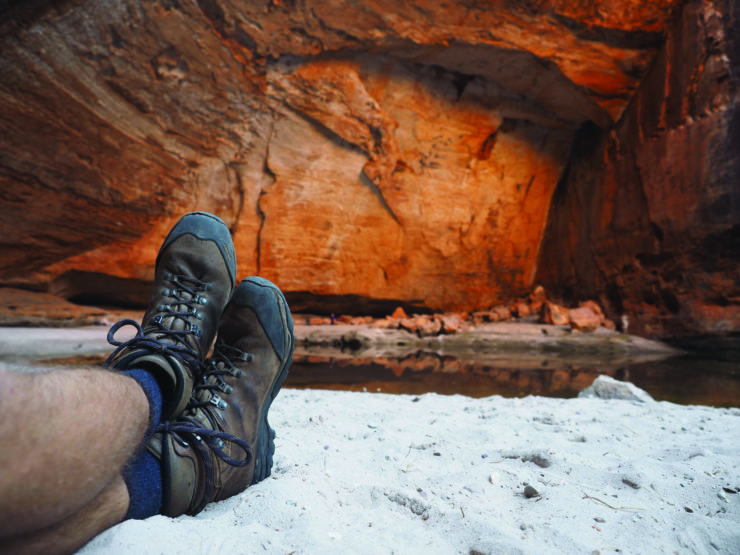How to break in new hiking boots

How to break in new hiking boots
Posted on
Who doesn’t love a new pair of hiking shoes or boots? The smell of new suede or leather. The fresh clean look. The maximum level of comfort and support that only new footwear can provide.
The only problem that – especially for some feet – new boots need time and wear in order to properly mold to your feet. In the meantime, wearing them on a long hike could prove disastrous, putting completing your hike in jeopardy and leaving your feet an absolute mess.
The answer is to break them in properly. There are no shortcuts here, either – don’t listen to anyone who says you need to soak them in water or just smash out a 10-kilometre hike in them straight out of the box. Breaking in new hiking shoes or boots in a slow process.
Get the right shoes or boots and have them properly fitted
When you buy the wrong hiking shoes or boots for your feet, you can wear them on a thousand hikes and they’ll still be no good. While it’s tempting to shop online where you can compare prices and see a broader range of styles, you’re better off going to an outdoors store where you can try them on in person, preferably with the assistance of someone who knows how to fit them and test them out correctly.
If you have orthotic inserts or you like to hike in a certain type of socks, make sure you bring them with you and wear them while trying on the shoes.
Don’t be in a hurry when shopping for your hiking footwear or you might end up handing over your hard-earned cash for them without being sure they’re right for your feet. With these tips in mind, you’re more likely to walk away with a pair you’ll be happy with.
Don’t dive straight into long hiking trails
When you don your new footwear for the first handful of times, you’re better off doing it around the house where if you have any troubles you won’t be stuck with them.
Again, make sure you use the socks you intend to hike in as well as orthotic inserts if you have them. Put the shoes or boots on, making sure the tongues and gussets are straight and the laces are done up correctly, and wear them around the house or out in the garden for an hour or two each day, over the course of a week or so.
While they’re on, take note of any slipping at the heel, pinching around your toes, excess pressure on the top of the foot, hot spots anywhere on the foot, or cramping. You may be able to address some of these issues by using different lacing techniques, so adjust the laces as you go.
Time to get them dirty
With the best lacing technique decided upon and your feet starting to get used to your new shoes or boots, it’s time to hit the trails. Start with day hikes or half day hikes first or your feet might end up in a bad way. The introduction of uphill and downhill stretches coupled with the varied terrain might mean you find some other issues that could be addressed by changing up your lacing. Most importantly, though, the time you spend on the trails will give your feet a chance to get used to the boots (and vice versa).
If you’re paying enough attention, you’ll notice that over time the boots will start to hug your feet better. Before long you’ll barely notice you’re wearing them, at least at the beginning of your hikes.
Unfortunately, some feet are always prone to blisters, so it may be that no amount of wearing in will help. In this case, consider other preventative options like blister socks, moisture wicking sock liners, moleskin tape, or blister pads.
Look after your shoes or boots in between hikes
Apart from the fact that caring for your new footwear will increase its lifespan, what many people forget is that leaving them wet or failing to store them properly can change how they fit.
When you get your boots wet or muddy, you need to make sure to clean them and dry them properly after your hike. Even if you’re hiking in dry, sunny conditions, the sweat from your feet can cause issues. After each hike, scrub off any dirt or mud and leave them out to dry naturally so that they retain their shape as they dry. Don’t dry them in front of a heater, or even in direct sunlight as this can have the same effect as not drying them at all.
Once dry, store them upright in a dry airy spot if possible. Avoid piling anything on top of them. All good hiking shoes and boots are built tough, but if you don’t look after them you can’t expect them to hold their shape.
A quality, well-fitting, worn in pair of hiking boots or shoes will be your best friend on the trail. Choose the right pair and take care of them well, and you can expect to last for years, which means even an expensive pair will be well worth the investment.
-Neil Fahey
Guest blogger from the bushwalkingblog



